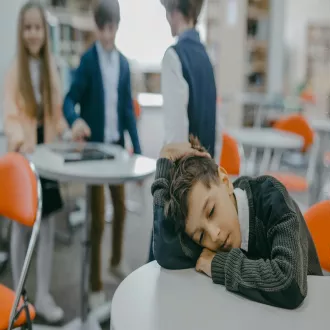Transcription Anxiety disorders and depression in childhood
Anxiety as a Common Childhood Experience
Anxiety, to some extent, is a normal part of childhood, as a child's world is often new and frightening.
Surveys reveal that worry is a common experience, with nearly half of all children having multiple fears, especially about school.
However, for some children, these anxieties can become long-lasting and debilitating, interfering with their daily lives and their ability to function properly.
Anxiety disorders are, in fact, particularly common among children and adolescents, affecting between fourteen and twenty-five percent of them.
Despite their high prevalence, it is estimated that around two-thirds of children who suffer from anxiety do not receive any form of treatment for their condition.
Childhood-Specific Anxiety Disorders
This group of problems includes disorders similar to those of adults, such as social anxiety disorder and generalized anxiety disorder.
It also includes specific childhood forms, such as separation anxiety disorder, which is characterized by excessive anxiety when the child is separated.
Another disorder is selective mutism, in which children fail to speak in certain social situations, such as the classroom.
These children, however, often have no difficulty speaking at home when they are in the company of family members.
Anxiety disorders in childhood are often dominated by behavioral and somatic symptoms, such as avoidance, irritability, or stomachaches.
Manifestations of Childhood Depression
Approximately 2 percent of children and 8 percent of adolescents experience a depressive disorder during their development.
Childhood depression frequently manifests itself through symptoms such as irritability, headaches, and stomachaches that are recurring.
Another common sign of depression in children is a marked and persistent lack of interest in their toys and usual games.
Depression in young children can b
anxiety disorders and depression in childhood




